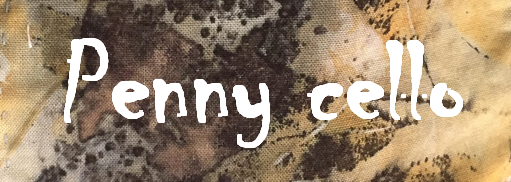I divided the bag of dresses into two piles: very green, and green with some blue. All but one dress were cotton fabrics: the single silk one had faded quite a lot, and it can be hard to sew fabrics of different weights together. It became my first refashion: I chopped the top off, sewed it closed, and it is now my overlocker cover! As green is my favourite colour, I was pretty happy with this!
Mum gave me these cute buttons, too.
Onto the pile of greens. I sat in front of some TV shows and picked apart all of the seams. I ended up with some odd-shaped pieces:
But I had fabric panels the full length of the dresses to work with in the end as well. I wanted to do strip-patterns for both piles of fabric, so I took over the floor. I decided that I wanted a skirt, so I laid all of the strips out on the floor and rearranged them until I was happy.
The crocodile-skin print is from an Indigenous organisation in the Northern Territory called Merrepen Arts. It's an amazing layered print, and they have produced it in a fabulous bright blue and orange combination as well.
I left the existing hems on the bottom of all of the panels, as I didn't mind if they didn't match up exactly. You can already see odd seams and shapes on the panels from the dresses, where there were darts, inserts, etc.
I overlocked the top of the fabric to seal it. Then I salvaged a zip from one of the dresses and put it at the back of the skirt, joining the back seam together. I realised after I had sewn it all that I should have shortened the zip, as it reaches two-thirds of the way down the skirt! Very easy to get in and out of though :)
I loved that most of the donated dresses had cap sleeves on them, which make great pockets!
I've also started putting loops on my work skirts and dresses (I like wearing colour), so that I can attach my access pass. Lanyards annoy me, and the clip on the pass digs into my skin.
The final '50 Shades of Green' skirt:





















































